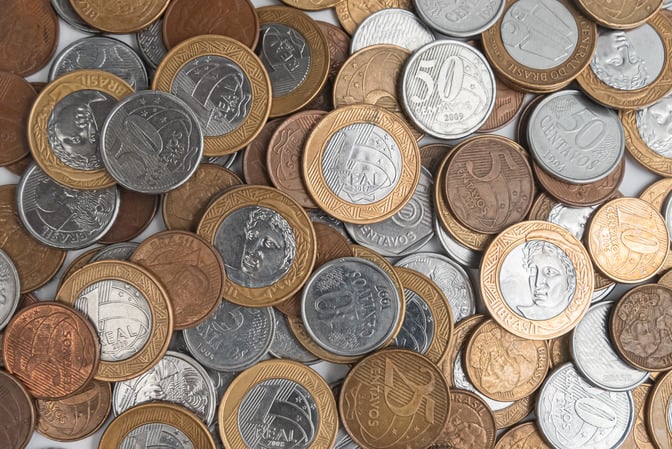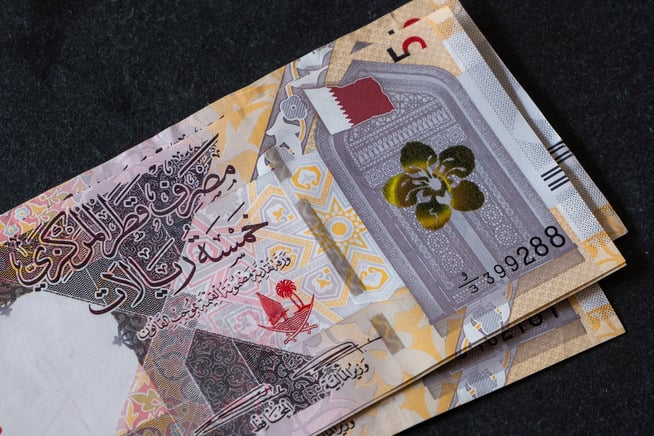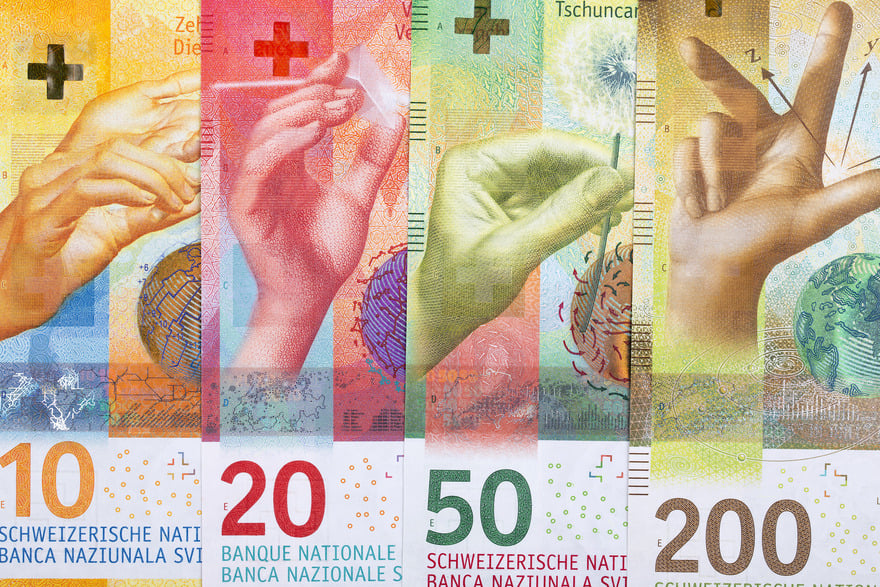There are currently about 180 fiat currencies recognized by the United Nations as the legal tender of various territories. These currencies differ in their value in local trade and how they exchange against other currencies from other countries. But how is this value determined and what is the strongest currency in the world? This article ranks the highest currency in the world and explains the economic factors that influence currency strength.

What Defines the Strength of a Currency?
So what really defines the strength of a currency? To determine what is the strongest currency in the world, we have to understand the factors behind a currency’s true value. Generally, the strength of any currency is determined by a wide range of factors. The most valuable currency in the world is determined by factors like the economic and political stability of the country, interest and inflation rates, balance of trade, foreign exchange reserve and the country’s debt level.
Top 10 Strongest Currencies in the World – Comparing the Most Valuable Currencies
Some currencies like the United States Dollar and the British pound are the most traded globally. Interestingly, these currencies aren’t the strongest in the world. Here’s a ranking of the top 10 strongest currencies in the world and the factors that make them so powerful:
1. Kuwaiti Dinar
Exchange Rate: ~1 KWD ≈ 3.25 USD
Why It’s Strong: Kuwait’s currency strength comes from a perfect mix of factors: vast oil reserves, a small population, and disciplined fiscal policies. The country is among the world’s top oil exporters, accounting for nearly 90% of its revenue. This consistent foreign currency inflow strengthens KWD’s global standing.
Monetary Strategy: Unlike other Gulf states, the KWD isn’t pegged exclusively to the USD. Instead, it’s pegged to a basket of currencies representing its major trading partners. This reduces volatility and cushions Kuwait against sharp swings in USD strength.
Sovereign Wealth: Kuwait invests heavily through the Kuwait Investment Authority, one of the largest sovereign wealth funds globally, ensuring currency stability even during oil price crashes.
Interesting Fact: KWD has consistently been the highest-valued currency for decades. Even during the Gulf War, when the currency temporarily collapsed, Kuwait recovered remarkably fast thanks to strong reserves and economic resilience.

2. Bahraini Dinar (BHD)
Exchange Rate: ~1 BHD ≈ 2.65 USD
Why It’s Strong: Bahrain has a smaller oil base than its neighbors but compensates with economic diversification, especially in banking, finance, and tourism. Its role as a financial hub for the Middle East attracts significant foreign capital, strengthening BHD.
Currency Peg: The BHD has been pegged to the US dollar since 1980 at a fixed rate of 0.376 BHD per USD, ensuring exchange rate stability for international investors and businesses.
Economic Diversification: Over the past two decades, Bahrain has actively reduced its dependence on crude oil revenues by investing in sectors like fintech, logistics, and real estate.
Interesting Fact: Bahrain pioneered offshore banking in the Middle East, which still contributes significantly to its GDP. Today, over 400 financial institutions operate there, making the dinar one of the region’s most stable currencies.
3. Omani Rial
Exchange Rate: ~1 OMR ≈ 2.60 USD
Why It’s Strong: Oman strategically maintains a high-value currency supported by steady oil production, strict monetary policy, and currency stability efforts. Its economy benefits from long-standing trade relations with Europe, Asia, and the US.
Fixed Exchange Rate: Since 1973, the OMR has been pegged at 1 OMR = 2.6008 USD – one of the tightest currency pegs in the world, ensuring predictability for businesses and investors.
Tourism & Trade: Oman has developed tourism, fisheries, and logistics hubs to complement its energy revenues, further backing the currency’s strength.
Interesting Fact: Despite global oil price volatility, Oman has managed to keep the rial stable by maintaining large foreign exchange reserves and leveraging its strategic location on key shipping routes.
4. Jordanian Dinar
Exchange Rate: ~1 JOD ≈ 1.41 USD
Why It’s Strong: Jordan stands out on this list because its strength doesn’t come from oil wealth but from political stability, remittances, and prudent monetary policies. Despite being a relatively small economy with limited resources, Jordan has maintained impressive currency strength for decades.
Pegged Exchange Rate: The JOD has been pegged to the USD since 1995 at 0.709 JOD per USD, fostering investor confidence and minimizing exchange rate volatility.
Remittances & Aid: Jordan receives significant foreign aid and remittances from citizens working abroad, particularly in the Gulf, which injects USD liquidity into the economy.
Interesting Fact: Jordan’s central bank is known for conservative policies that prioritize currency stability over short-term growth – a strategy that’s helped the dinar remain strong even during periods of regional political unrest.
5. Great Britain Pound
Exchange Rate: ~1 GBP ≈ 1.27 USD
Why It’s Strong: The UK’s diversified economy – driven by finance, tech, pharmaceuticals, and global trade – supports the pound’s long-term resilience. London remains one of the world’s largest financial centers, attracting trillions in daily forex volume.
Historical Role: GBP is the oldest continuously used currency, dating back to the 8th century. For centuries, it was the dominant global currency before the USD took over after World War II.
Global Status: Today, GBP is the fourth most traded currency and the third-largest reserve currency globally, underscoring its enduring international relevance.
Interesting Fact: GBP trading volume exceeds $600 billion daily, making it one of the most liquid currencies worldwide.
6. Gibraltar pound
Exchange Rate: ~1 GIP ≈ 1.27 USD
Why It’s Strong: The GIP is pegged 1:1 to the British pound (GBP), one of the world’s strongest currencies. Gibraltar’s economy thrives on financial services, shipping, e-commerce, and tourism, and its strategic location at the entrance to the Mediterranean makes it an important global trade hub.
Unique Currency Dynamics: While pegged to GBP, Gibraltar issues its own banknotes and coins featuring unique designs, making it culturally distinct but economically tied to the UK.
Interesting Fact: Outside Gibraltar, GIP notes are rarely accepted, even in the UK itself. However, British pounds are accepted freely in Gibraltar, reflecting the deep economic connection.
7. Cayman Islands Dollar
Exchange Rate: ~1 KYD ≈ 1.20 USD
Why It’s Strong: Despite its tiny population and economy, the Cayman Islands maintains one of the highest-valued currencies thanks to its position as a global financial powerhouse. With zero direct taxes and a favorable regulatory environment, it attracts massive foreign investments.
Currency Peg: The KYD is pegged to the USD at 1 KYD = 1.20 USD, giving investors stability and predictability.
Financial Hub: Home to over 100,000 registered companies, including hedge funds, banks, and multinational insurers, the Cayman Islands’ financial sector drives KYD demand globally.
Interesting Fact: Even though tourism contributes significantly to GDP, it’s the trillions in assets managed offshore that underpin the currency’s value.
8. Swiss Franc
Exchange Rate: ~1 CHF ≈ 1.14 USD
Why It’s Strong: The Swiss franc is a global safe-haven currency backed by Switzerland’s political neutrality, strong banking sector, and export-driven economy. The country leads in sectors like luxury goods, pharmaceuticals, and precision engineering.
Investor Demand: During global financial uncertainty, CHF demand spikes as investors seek stable stores of value. This keeps the franc consistently strong in forex markets.
Monetary Policy: The Swiss National Bank actively intervenes to prevent excessive appreciation of CHF, as a strong franc can make exports less competitive.
Interesting Fact: Swiss banknotes are considered among the most secure in the world, featuring advanced anti-counterfeit technology and artistic designs.

9. Euro
Exchange Rate: ~1 EUR ≈ 1.08 USD
Why It’s Strong: The euro is the official currency of 20 European Union countries, representing over 340 million people. As the second most traded currency and the second-largest global reserve, EUR benefits from the combined economic power of the Eurozone.
Diverse Economic Base: From Germany’s industrial exports to Italy’s luxury brands, the euro reflects the strength of multiple advanced economies.
Challenges & Stability: Despite occasional crises, the European Central Bank’s policies and deep integration across member states make EUR one of the world’s most stable and liquid currencies.
Interesting Fact: Over €1.5 trillion worth of euro banknotes are in circulation, making it the world’s most widely used physical currency.
10. US dollar
Exchange Rate: Benchmark currency
Why It’s Strong: The USD may not be the highest in nominal value, but it dominates the global financial system. It’s the most traded currency, the primary reserve currency, and the standard for commodity pricing (oil, gold, etc.).
Global Reach: Over 80% of global forex trades involve the USD, and roughly 60% of central bank reserves are held in dollars.
Economic Influence: Backed by the world’s largest economy, the USD’s strength is reinforced by the trust placed in US institutions and Treasury securities.
Interesting Fact: Around $2.3 trillion worth of USD circulates outside the US, making it one of the most widely used currencies in everyday global transactions.
Comparison Table: Top 10 Strongest Currencies in the World
| Rank | Currency & Code | 1 Unit ≈ USD | Pegged? | Main Economic Drivers |
|---|---|---|---|---|
| 1 | Kuwaiti Dinar (KWD) | ~$3.25 | Pegged to a basket of currencies | Oil exports, sovereign wealth fund, small population |
| 2 | Bahraini Dinar (BHD) | ~$2.65 | Pegged to USD (0.376) | Oil exports, financial services, tourism |
| 3 | Omani Rial (OMR) | ~$2.60 | Pegged to USD (2.6008) | Oil revenues, logistics, tourism diversification |
| 4 | Jordanian Dinar (JOD) | ~$1.41 | Pegged to USD (0.709) | Political stability, remittances, foreign aid |
| 5 | Gibraltar Pound (GIP) | ~$1.27 | Pegged 1:1 to GBP | Finance, shipping, e-commerce, tourism |
| 6 | British Pound Sterling (GBP) | ~$1.27 | Floating | Finance, technology, manufacturing, trade |
| 7 | Cayman Islands Dollar (KYD) | ~$1.20 | Pegged to USD (1.20) | Offshore finance, hedge funds, tourism |
| 8 | Swiss Franc (CHF) | ~$1.14 | Floating | Banking, pharmaceuticals, luxury exports |
| 9 | Euro (EUR) | ~$1.08 | Floating | Combined GDP of 20 Eurozone nations, industrial exports |
| 10 | United States Dollar (USD) | Baseline | Floating | Global trade, financial markets, reserve dominance |
Understanding Currency Stability and Value
The value of a currency refers to its strength or relative worth compared to other currencies. As the list above shows, currencies are often compared to the USD to determine their value. A currency’s value depends on various factors like its economic strength, interest rate and global demand. As currencies are bought and sold in the foreign exchange markets, their value will increase and reduce based on the demand and supply.
A currency’s stability refers to how well it is able to hold its value over time (basically the consistency of its purchasing power. This means the highest-value currency isn’t always the most stable. The Swiss franc (CHF) is generally considered to be the safest currency in the world due to its stability, but it isn’t the highest value in the world. However, there’s often a link between both qualities as the best currency in the world is renowned for its stability as well.
Frequently Asked Questions About Global Currencies
What is the strongest currency in the world?
The Kuwaiti Dinar is the strongest currency in the world, currently worth about 3.26 USD.
Which country has the highest currency value?
The Kuwaiti Dinar is the currency with the highest value. The value of this currency is tied to the country’s abundant oil reserves and economic prosperity.
What makes a currency the most valuable?
The value of a country’s currency depends on its demand and supply in the forex market. This is determined by various factors such as the country’s economic strength, interest rates, inflation, and capital flow.
How is the strength of a currency determined?
How the strength of a currency is determined depends on whether it is a floating or pegged currency. Most currencies are floating, which means their strength depends directly on the exchange rate in the forex market, a reflection of how much investors trust the economic strength and fiscal policy of the country. For currencies pegged to another currency, their value is fixed at an agreed rate and will depend on the strength of the currency it is pegged to.
What are the top 10 strongest currencies in the world?
The top 10 strongest currencies in the world are the Kuwaiti Dinar, Bahraini Dinar, Omani Rial, Jordanian Dinar, Great Britain Pound, Gibraltar Pound, Cayman Island Dollar, Swiss Franc, Euro and United States Dollar.
Is the Euro stronger than the Dollar?
Yes. The Euro is stronger in terms of the exchange rate which determines their relative values. However, the USD is the most traded currency as well as the largest reserve currency in the world.
Which currency is considered the most stable?
The most stable currency in the world is the Swiss franc (CHF).




